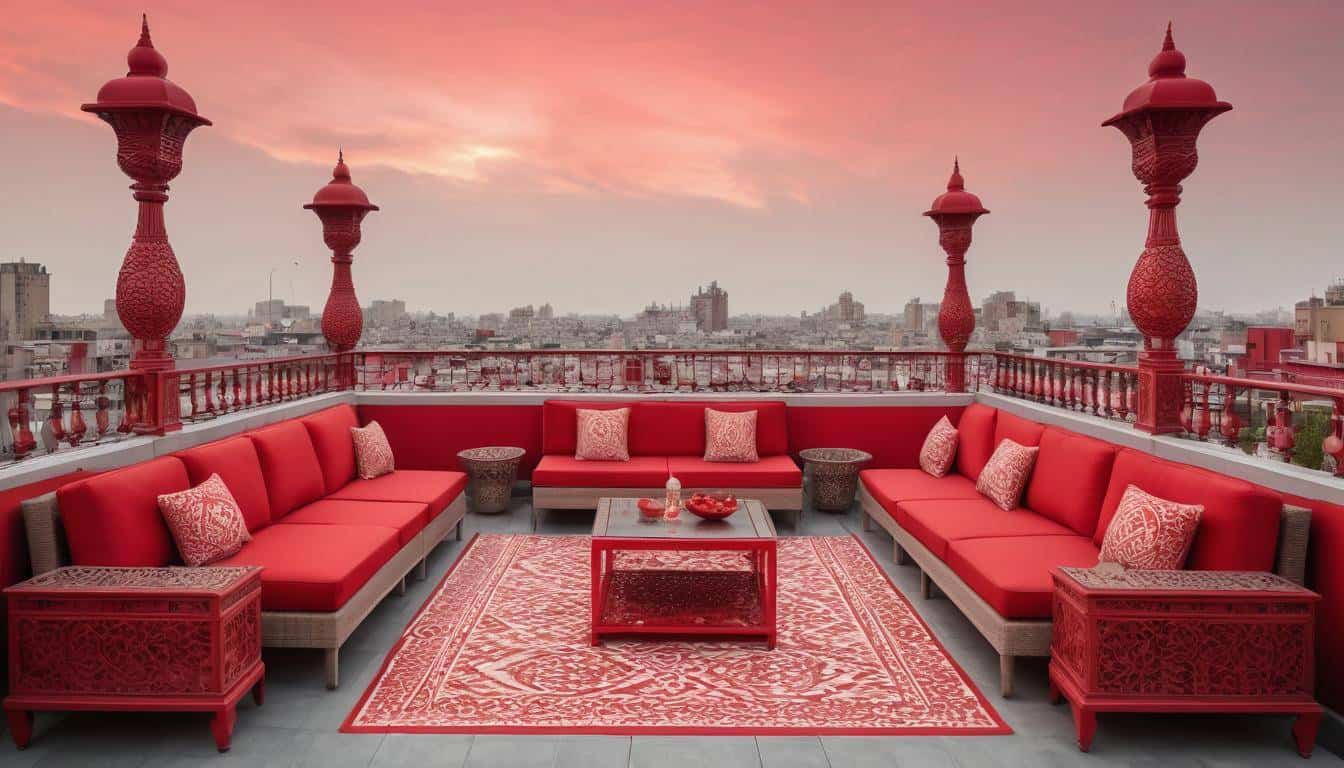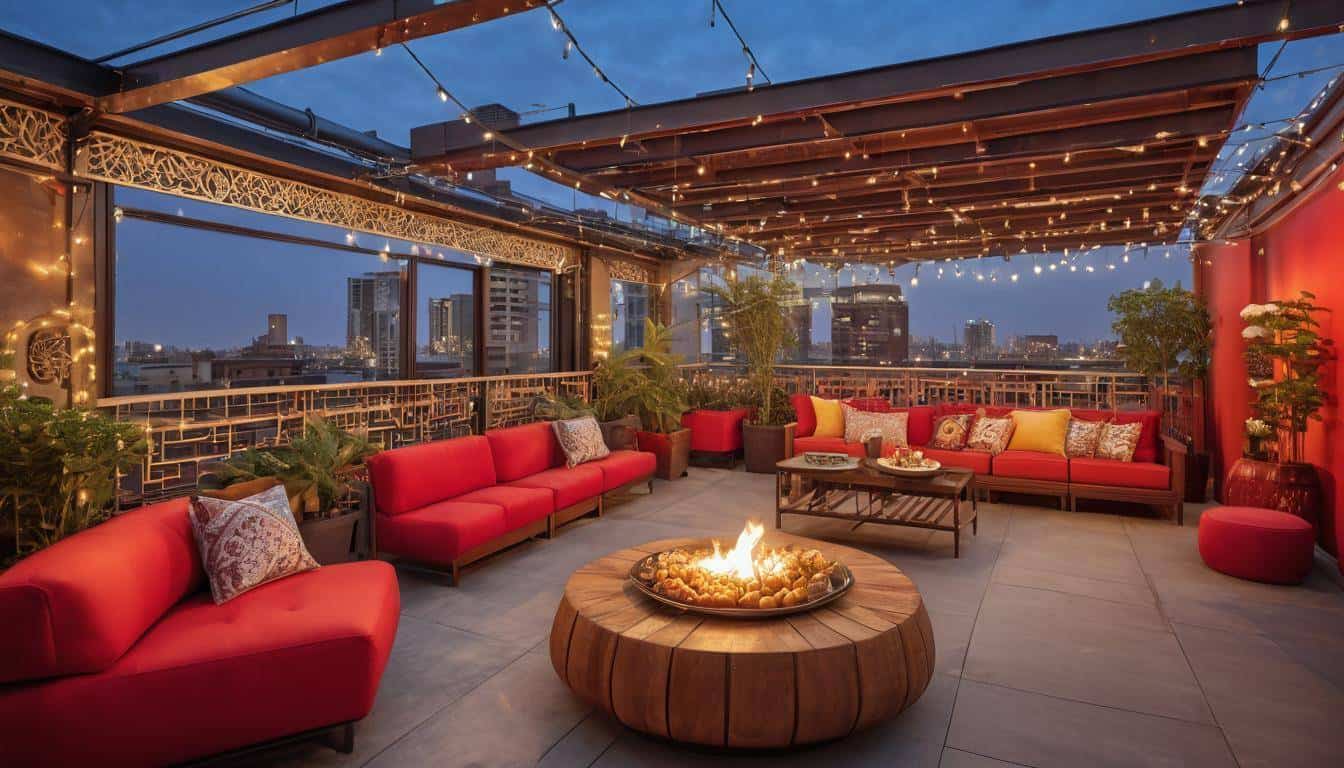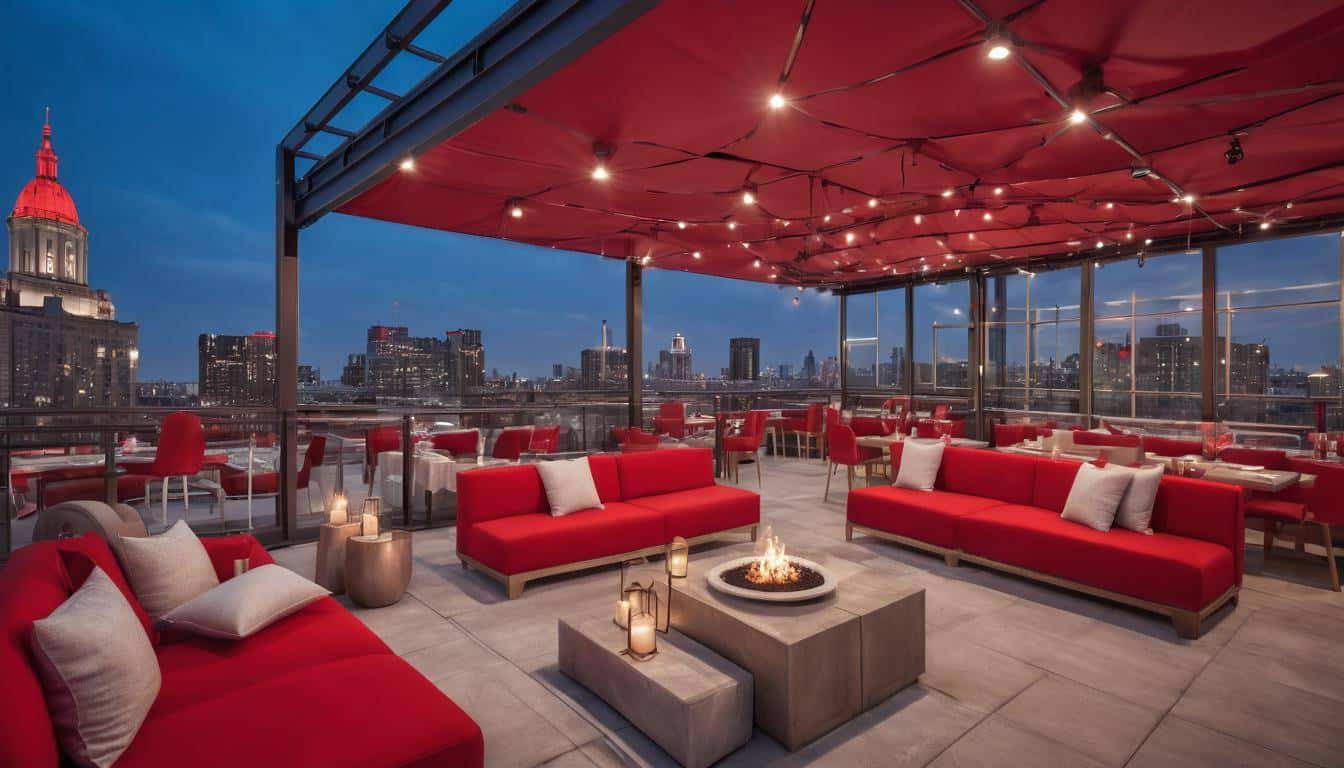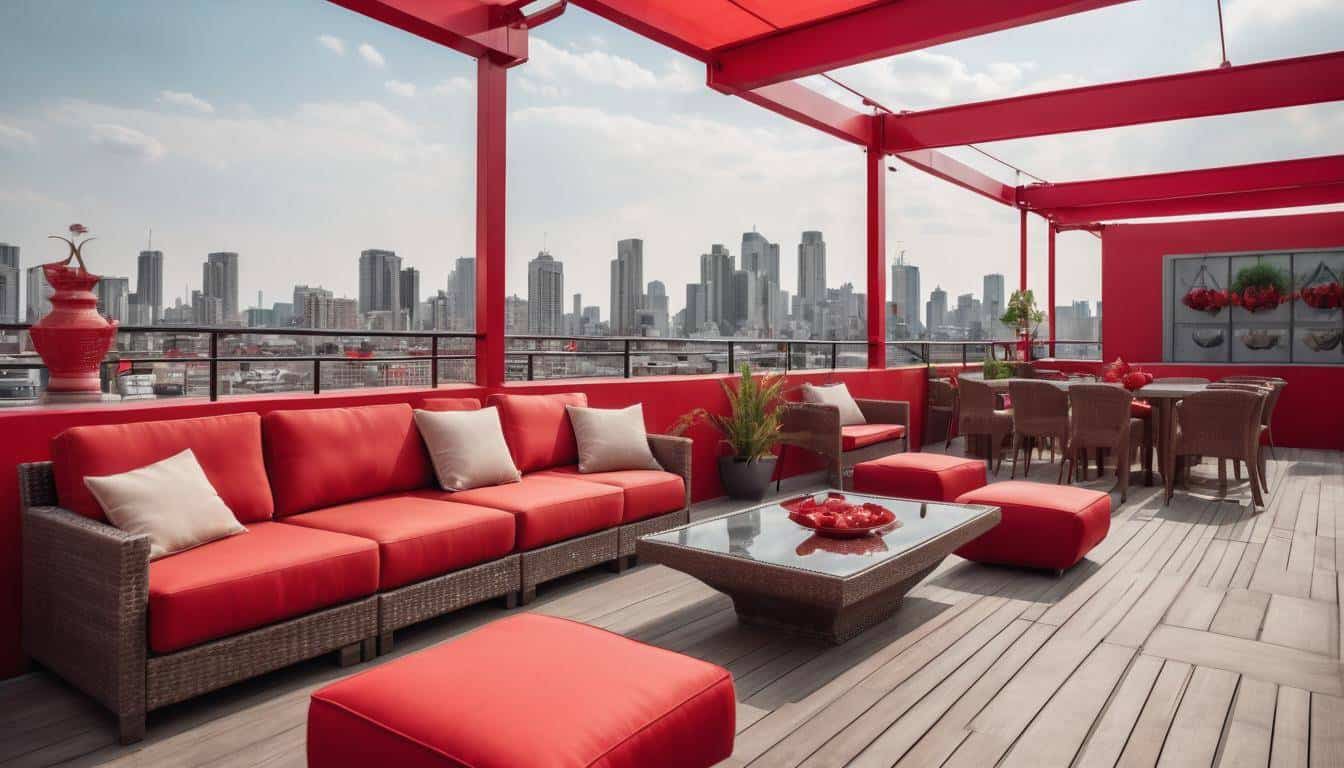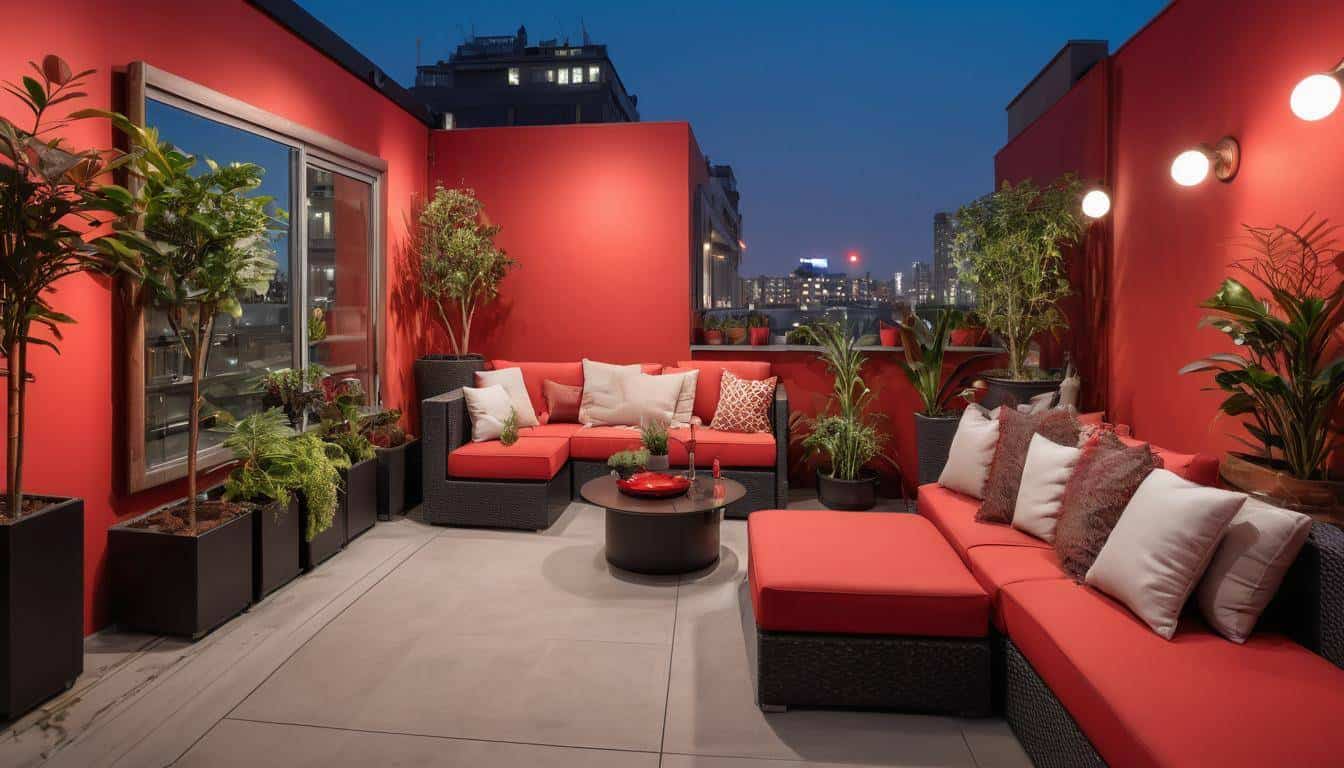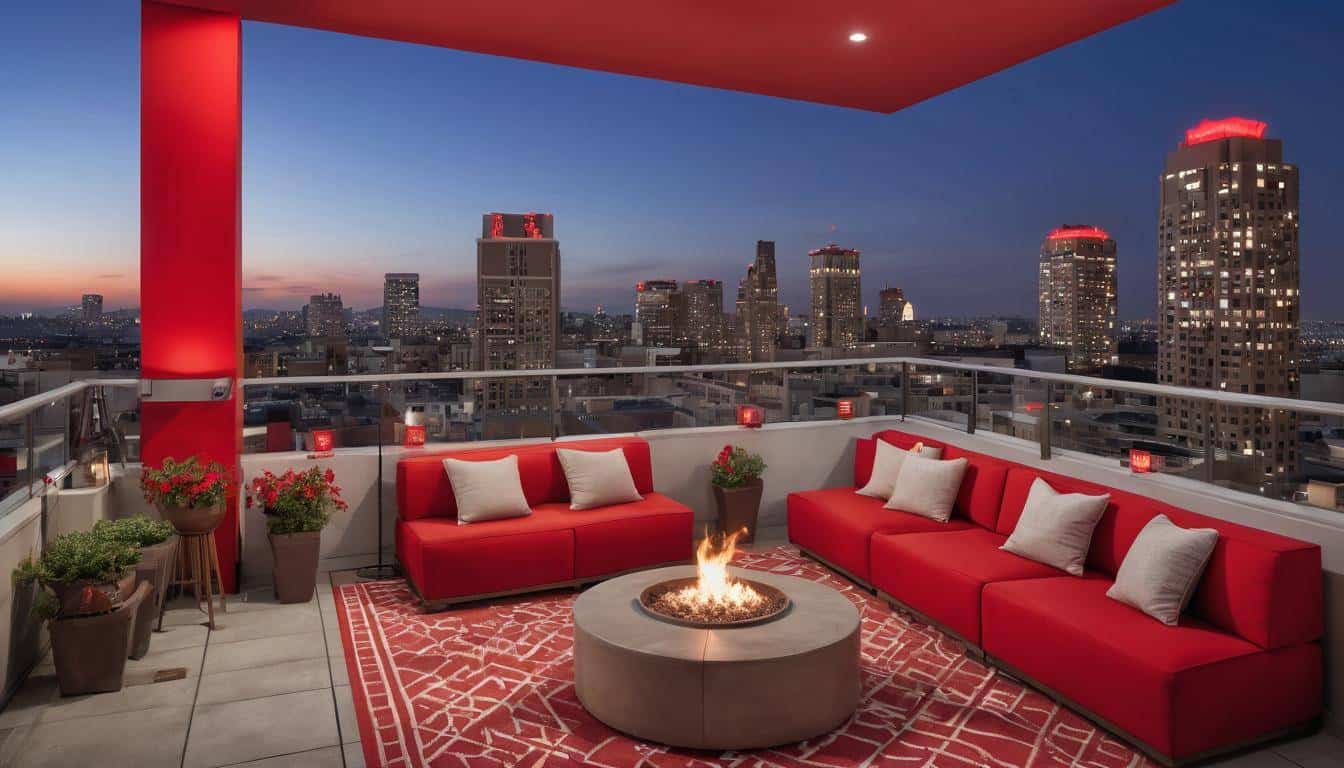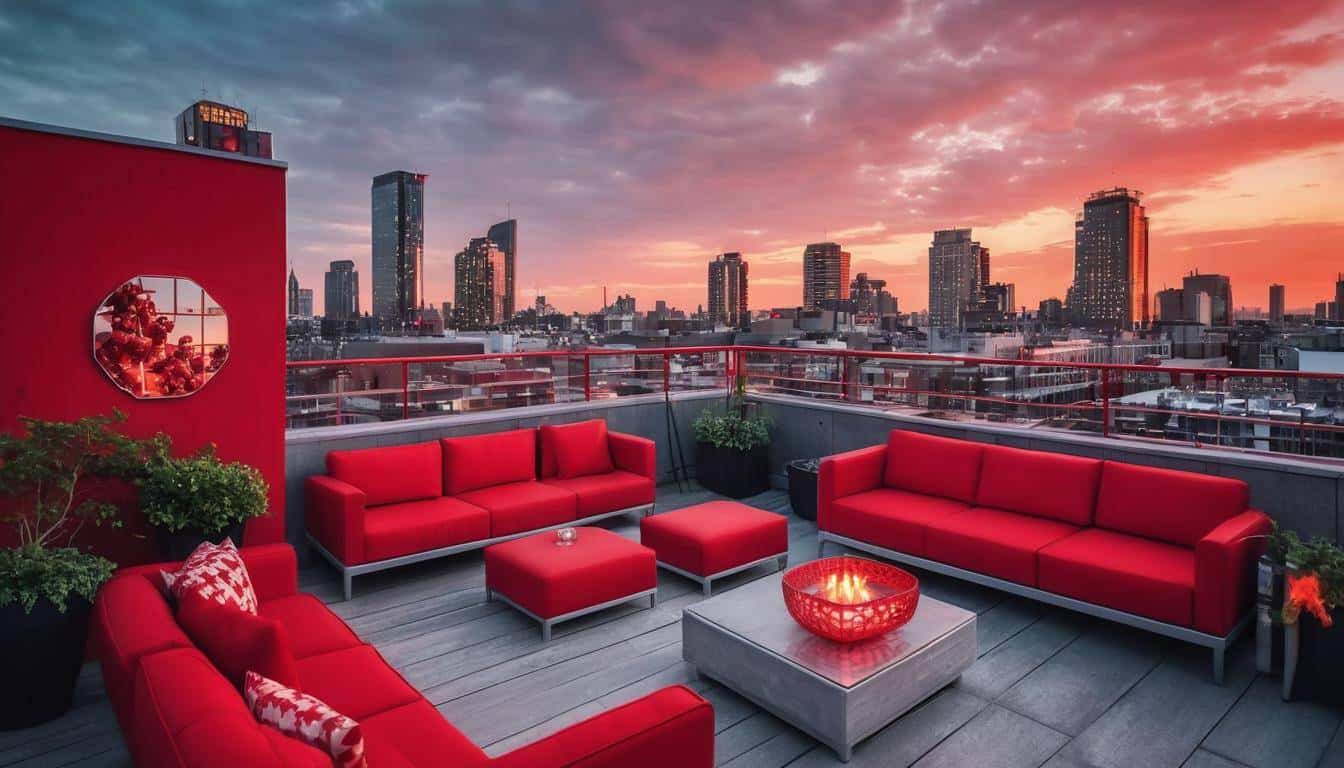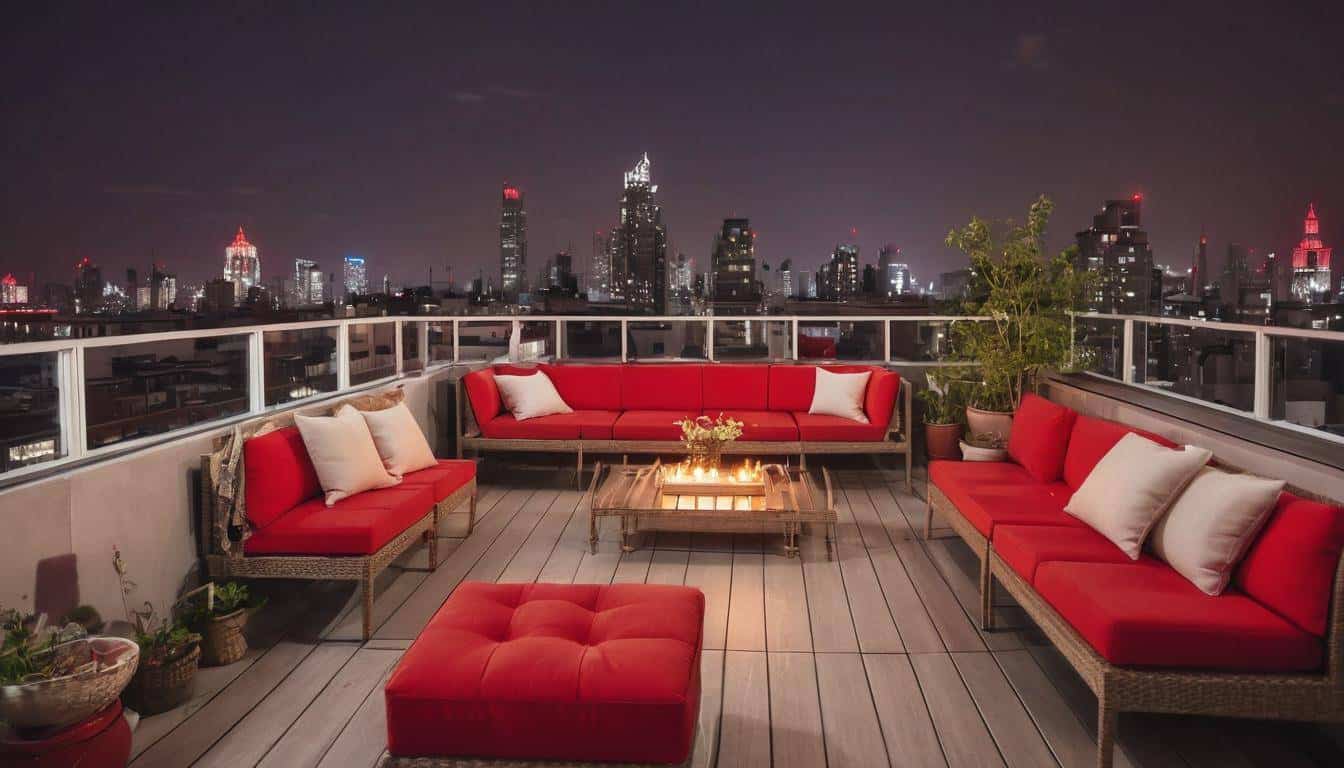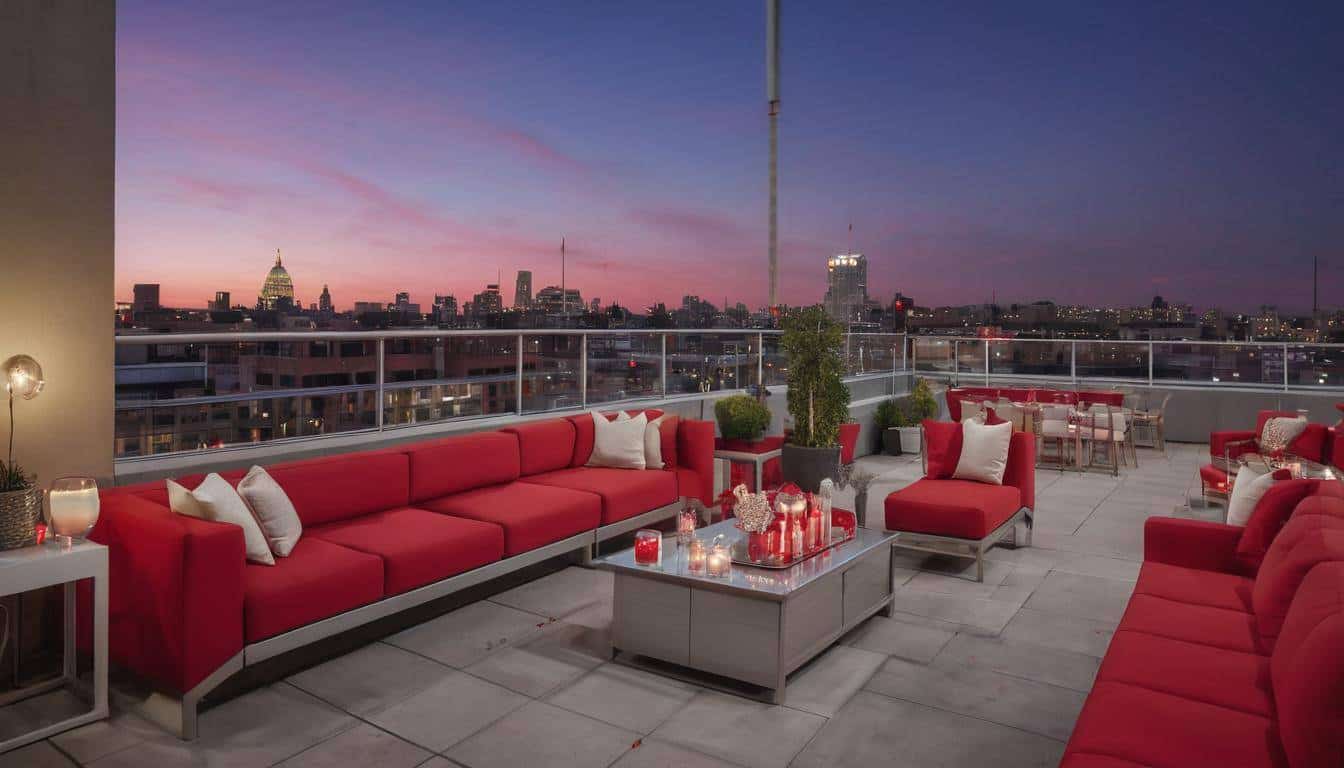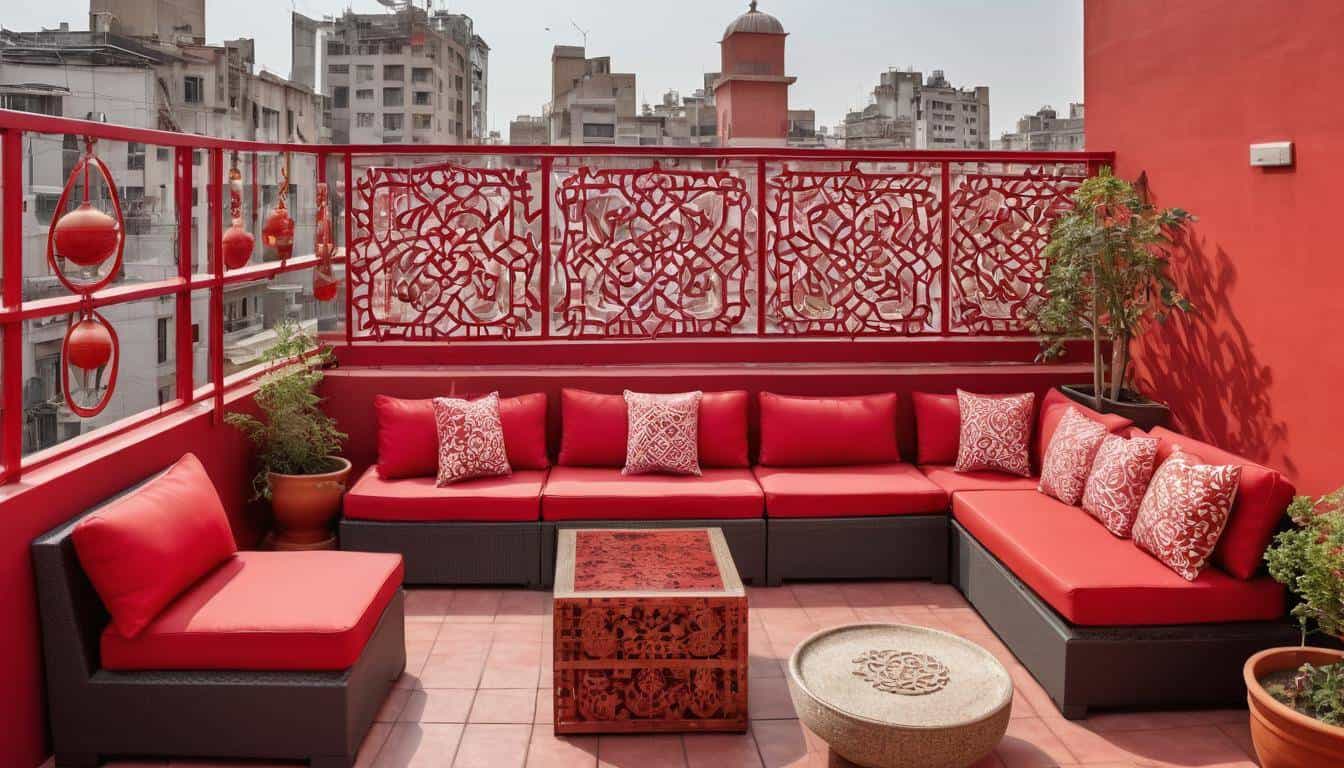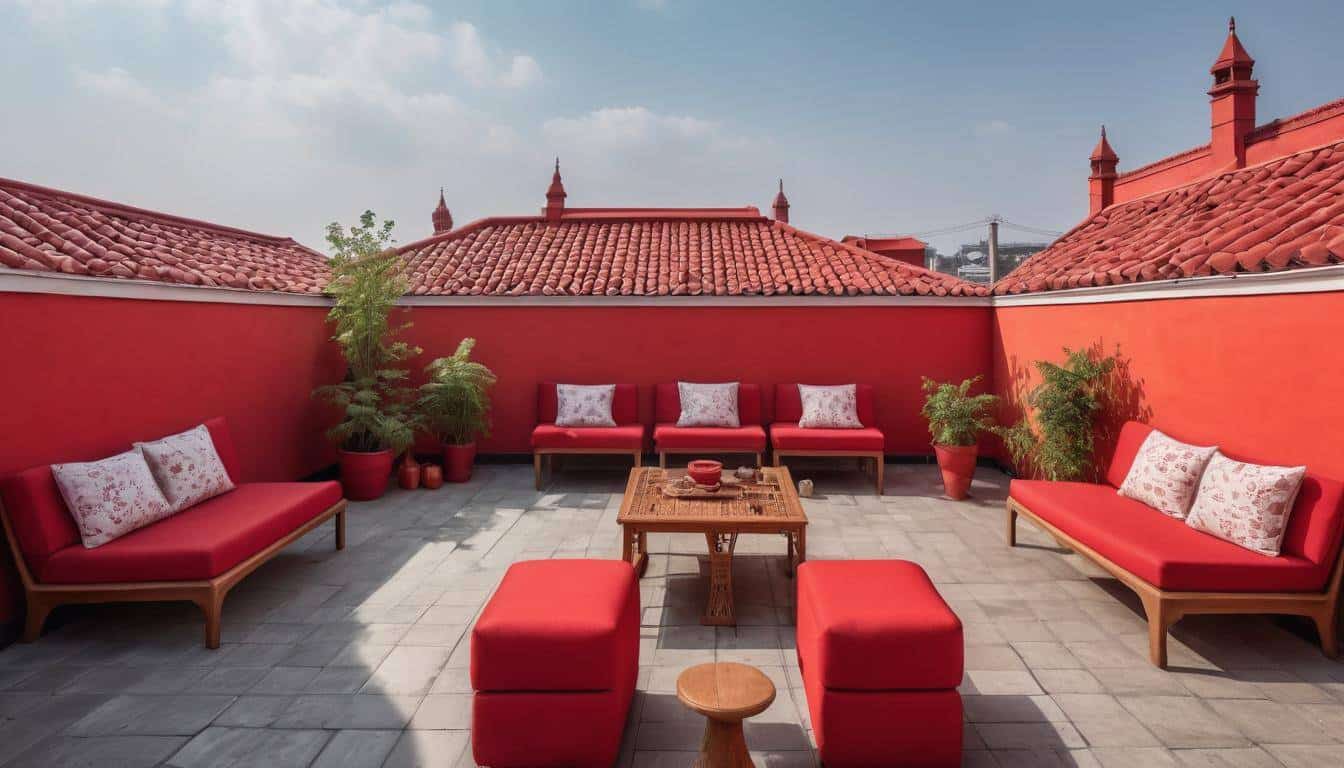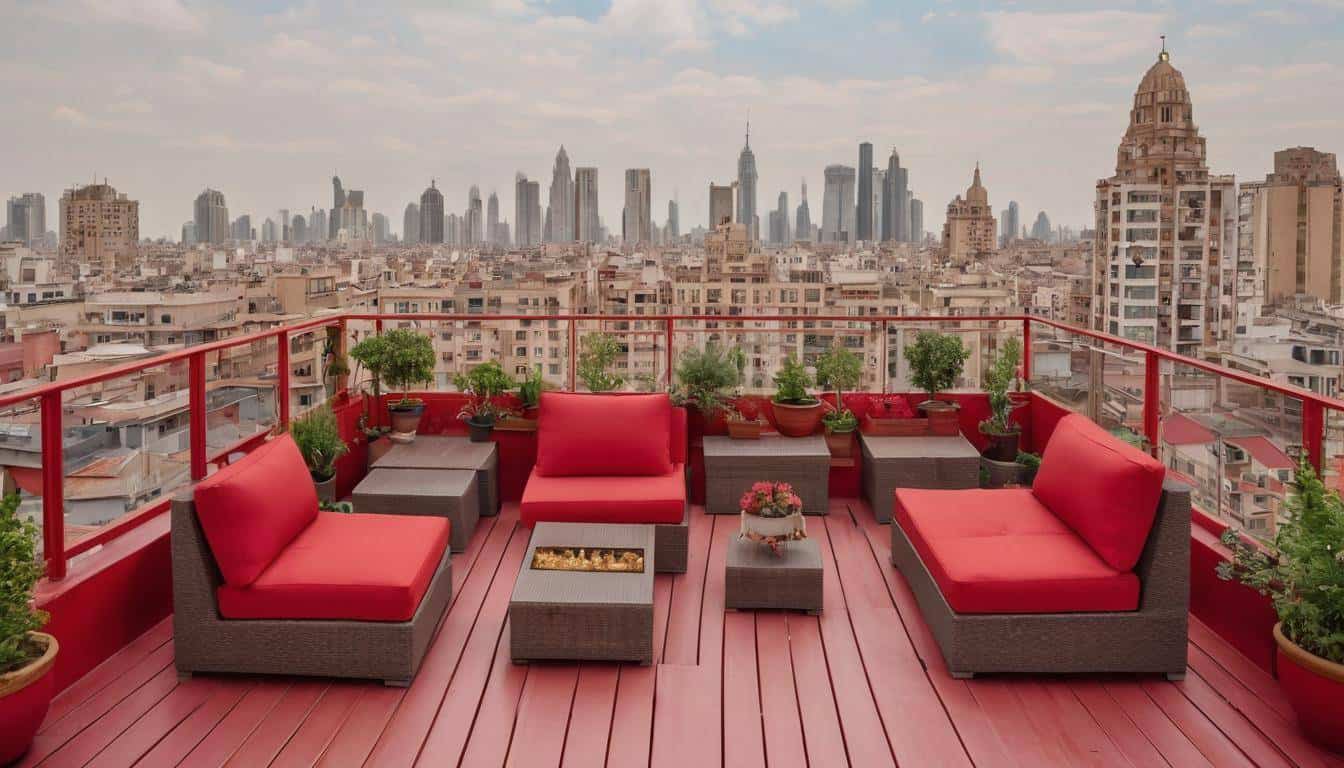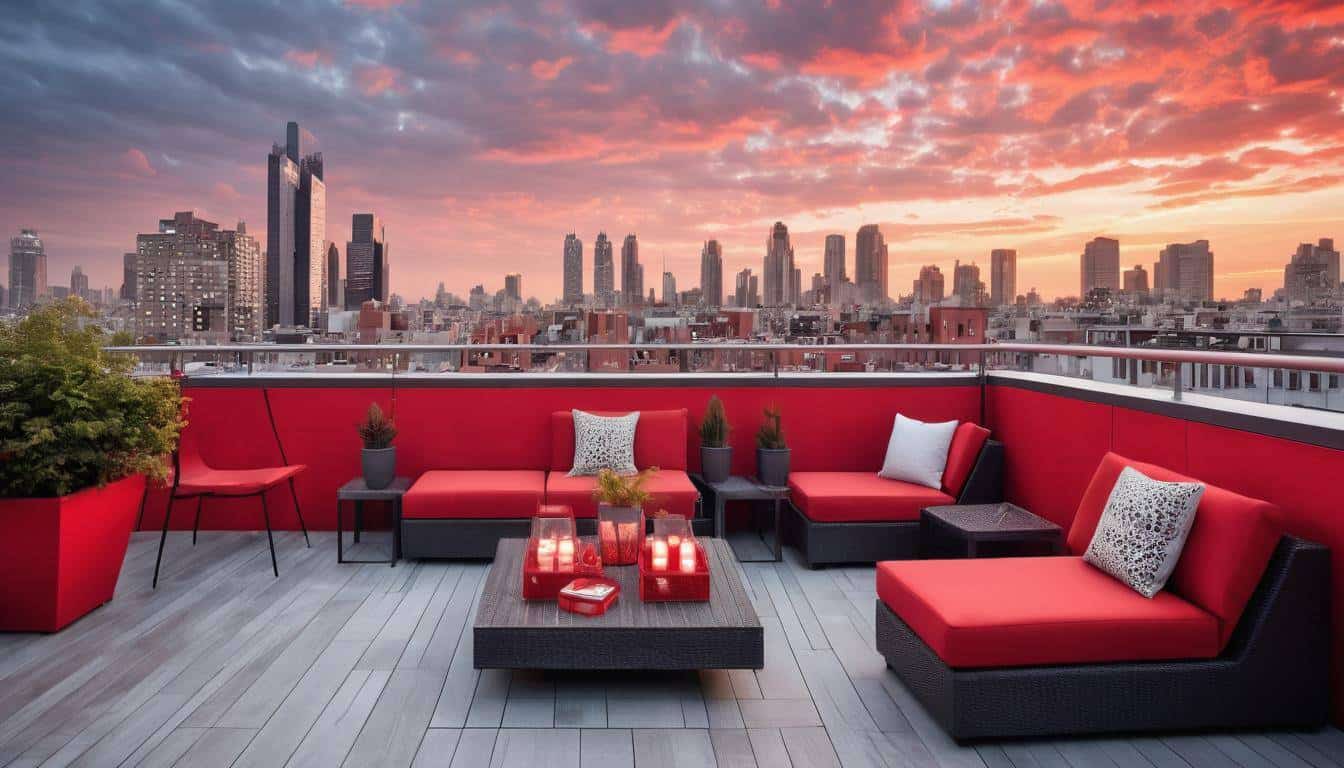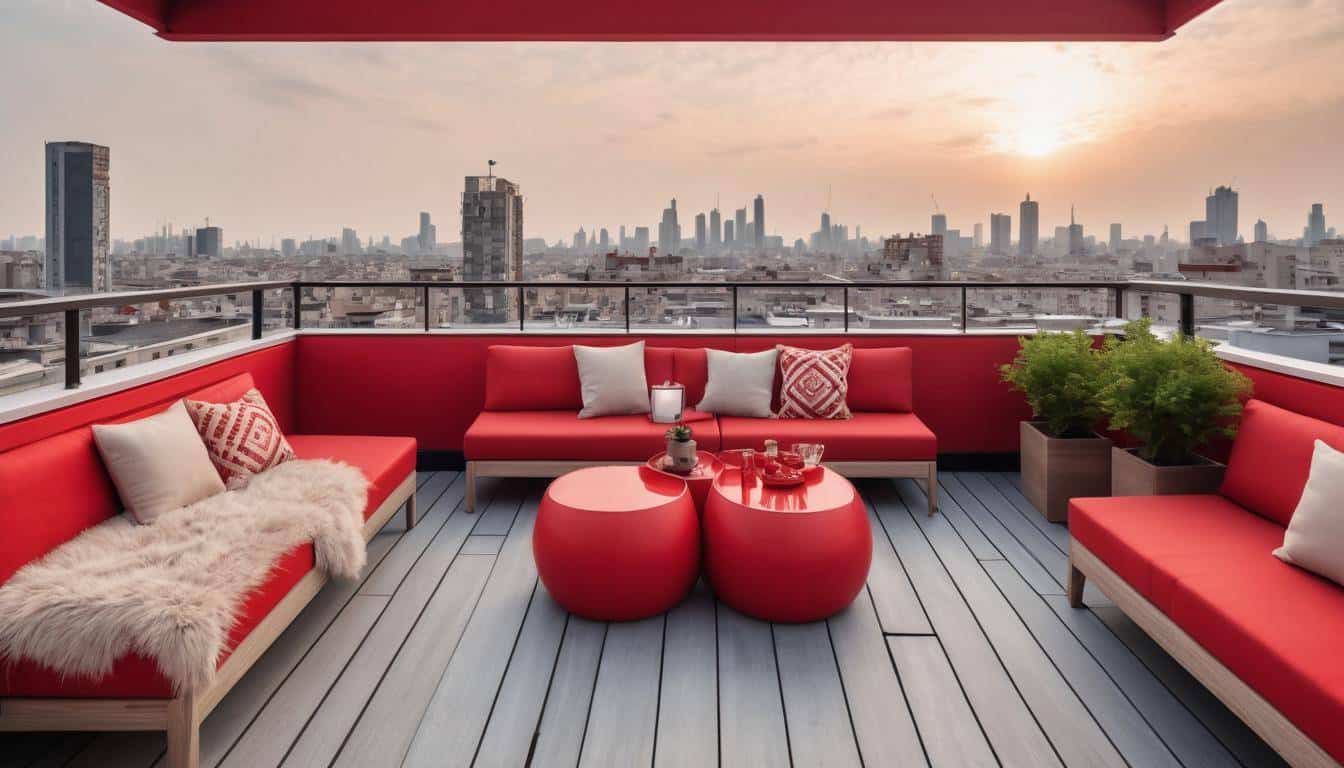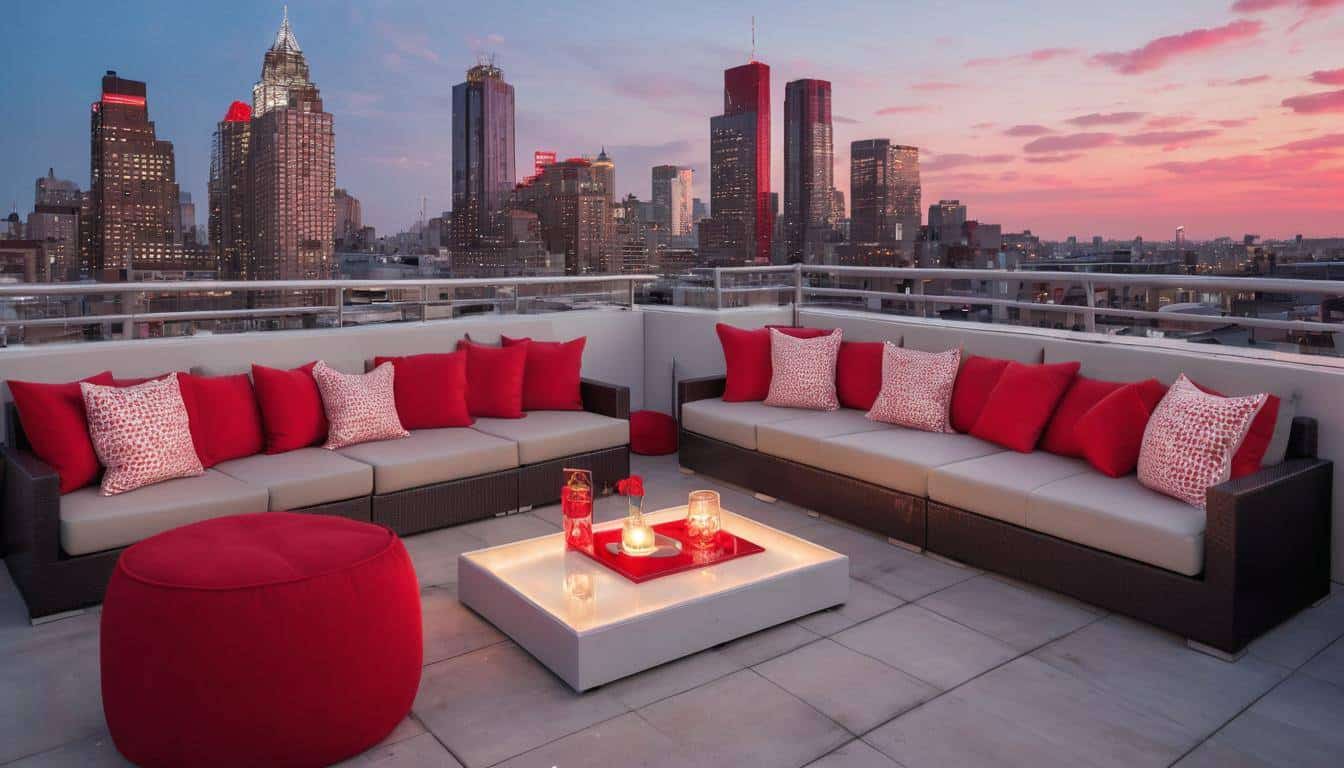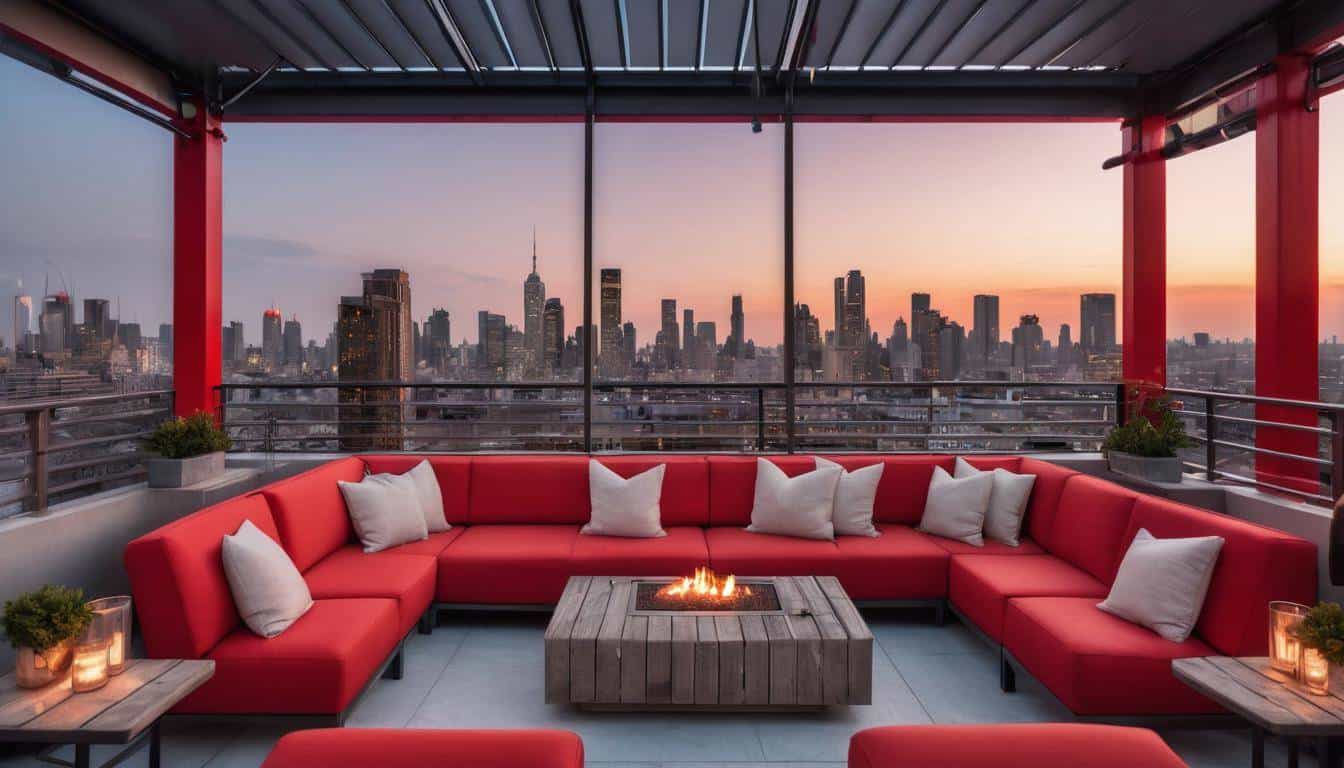There’s something undeniably alluring about red rooftops that beckons any avid photographer or architecture enthusiast. These vivid roofs create an enchanting contrast against urban backdrops and natural landscapes alike, making them perfect subjects for your next photoshoot. The journey to find these picturesque wonders isn’t merely about their visual appeal; it’s also an exploration into centuries-old architectural styles and cultural significance.
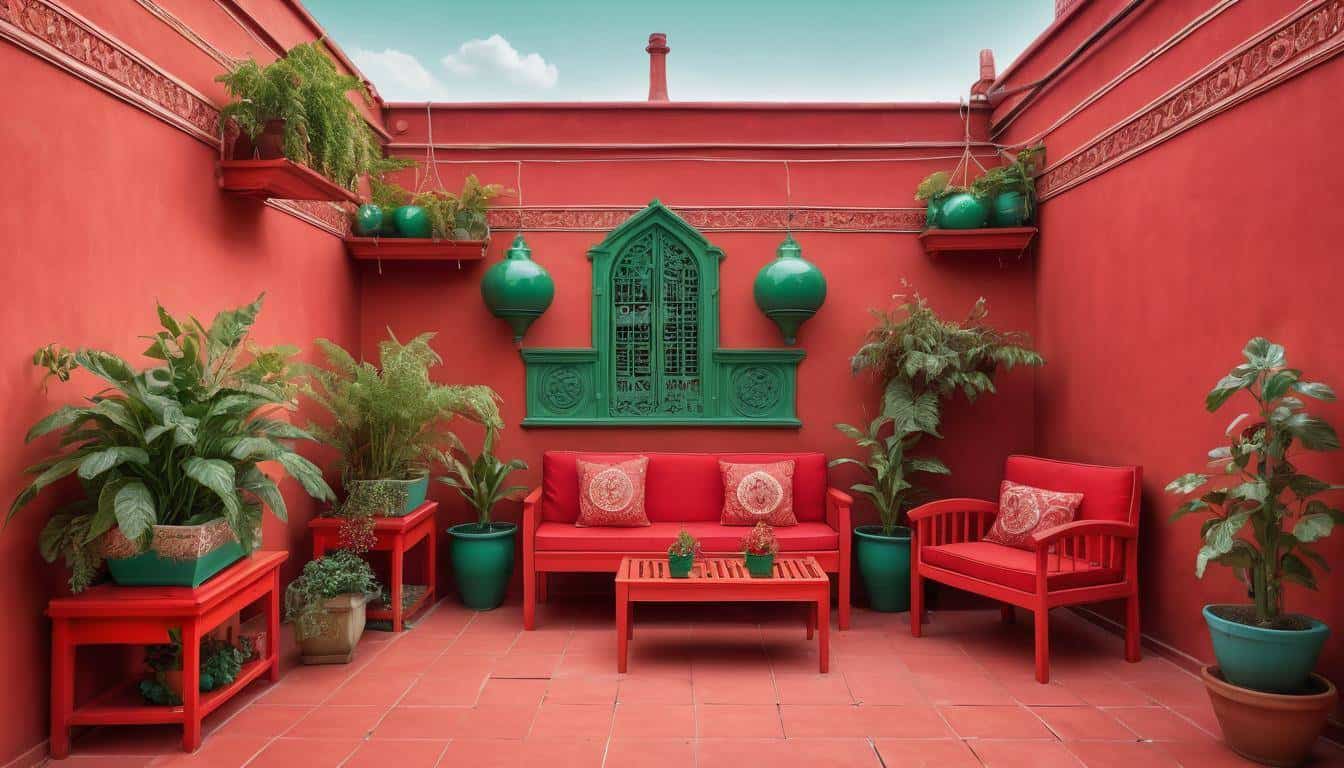
Our in-depth research meant scouring cities known for their iconic red-tiled roofs, such as the Mediterranean villages and colonial American towns. These efforts unraveled both beautiful imagery and fascinating stories tied to these vibrant structures. Beyond their eye-catching appearance, you will find that the choice of material—from traditional clay tiles to modern composites—adds durability while maintaining their timeless charm.
One stunning example of beautiful red rooftops is found in the picturesque village of Ronda, Spain. The traditional Spanish architecture and vibrant red tiles create a captivating and charming aesthetic that is a must-see for any traveler or architecture enthusiast.
Exploring the Beauty of Red Rooftops
Red rooftops aren’t just any ordinary rooftops. They are like a vibrant stroke of paint on an urban canvas, creating a stunning contrast against the blue skies and lush greenery below. The eye-catching hue draws our gaze upward, giving buildings a distinctive appearance that sets them apart from others. It’s like an artist deliberately highlighting a specific part of their masterpiece to make it stand out.
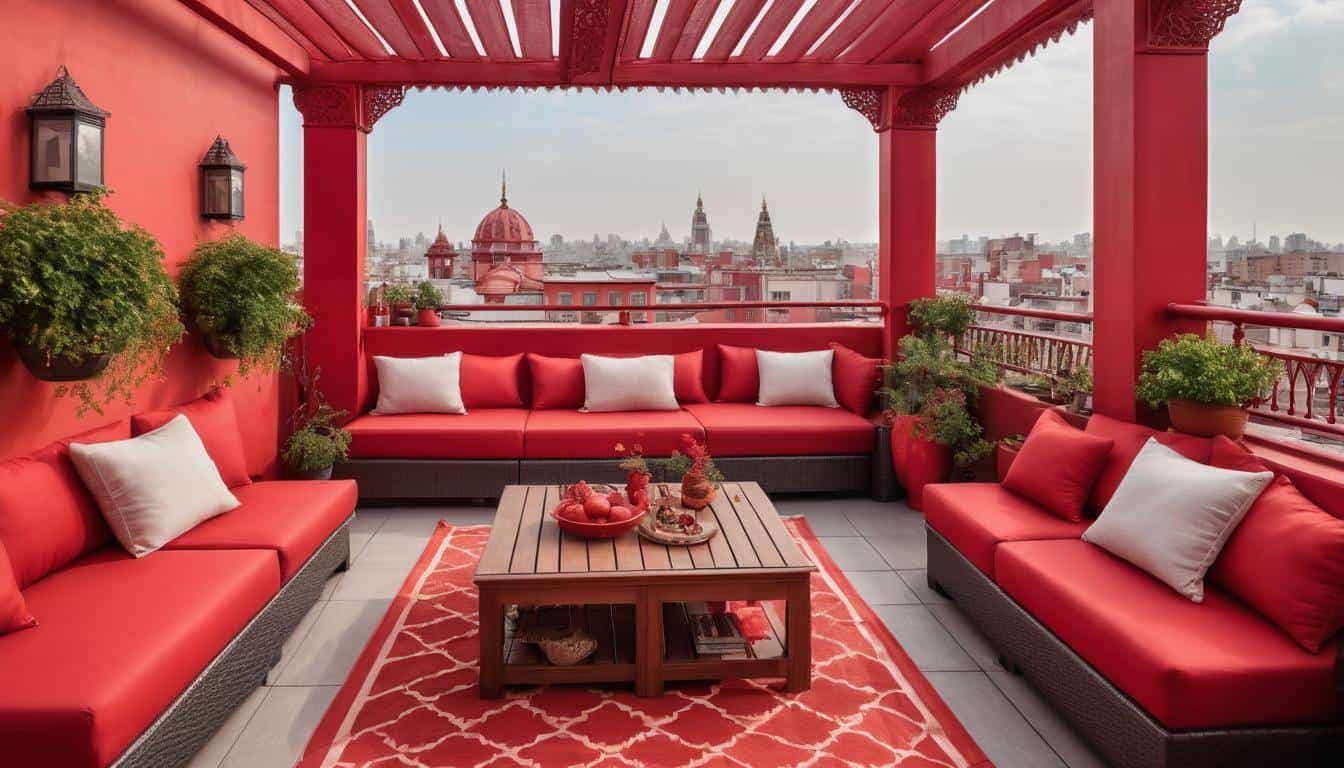
What makes red rooftops even more fascinating is the range of historical and traditional significance they carry across different cultures. In many Mediterranean countries and regions, buildings and houses have reddish roofs primarily due to the availability of red clay tiles. This practical and cost-effective choice for roofing materials isn’t just an aesthetic preference—it’s deeply rooted in the culture and tradition of these areas.
“The reddish color of the roofs adds to the aesthetic appeal of the urban architecture, creating a picturesque view.”
If we take a mental journey around cities and towns with red rooftops, it’s easy to feel that warmth and welcoming charm exuding from each building. It’s as if they’re saying, “Come on in, stay a while.” They perfectly encapsulate those sentiments associated with warm and inviting colors—feelings of comfort, safety, and hospitality.
Moreover, it’s not just their looks that make red rooftops so special; they’re built to last. Constructed from materials like red clay tiles, slate, or modern composite materials, these roofs aren’t just beautiful; they’re durable too. Their longevity does justice to their striking appearance and cultural significance, making them much more than just a pretty facade.
So if you’re inspired by the allure of red rooftops, consider visiting Amazinghomedecorco for more inspiration on how to incorporate this timeless architectural feature into your own home design. Whether it’s through traditional terracotta tiles or sleek composite materials, embracing the beauty of red rooftops can truly transform the look and feel of your space.
As we plunge into the diverse tapestry of architectural styles featuring this iconic feature, let’s unravel the rich history behind these captivating structures.
Architectural Styles Featuring Red Roofs
In the realm of picturesque urban architecture, the Mediterranean style shines as an iconic embodiment of the red roof aesthetic. This style is deeply ingrained in various Mediterranean countries like Italy, Spain, and Greece. The vibrant red clay tiles adorning the rooftops perfectly complement the stuccoed walls and arched doorways, fashioning a timeless and captivating look.
The Colonial Revival architectural style in the United States also showcases the distinct presence of red roofs. Reflecting historical buildings, Colonial Revival homes feature red roofs made of either metal or asphalt shingles, engineered to emulate the appearance of traditional clay tiles. The red roofs pay homage to the classic and refined architecture of bygone eras, imparting a touch of historical charm to modern homes.
Transitioning from the Mediterranean and historical American architecture, let’s explore ranch-style homes in the American Southwest. Renowned for their simple and unpretentious designs, ranch-style homes often flaunt red roofs that offer a captivating contrast to their typically lighter-colored exteriors. The striking visual impact of the red roofs against the backdrop of the expansive Southwestern landscape creates a mesmerizing and picturesque scene.
Across these diverse architectural styles – from the alluring Mediterranean style to the enduring charm of Colonial Revival homes and the understated elegance of ranch-style residences – the use of red rooftops remains a common thread across varied cultures and regions. The warmth and vibrancy exuded by these red roofs add depth and character to urban landscapes, crafting a picturesque visual tapestry cherished by many.
As we’ve glimpsed into the breathtaking beauty of urban architecture with its resplendent red rooftops, let’s now dive deeper into another fascinating aspect: the timeless allure of red clay tiles.
The Aesthetic Appeal of Red Clay Tiles
Red clay tiles have charmed people across generations and continents with their warm, earthy hues and rugged textures. What makes these tiles particularly enchanting is their ability to gracefully mature over time, acquiring a weathered look that adds distinct charm to the roofscape—an enduring tale of endurance and character.
The natural attributes of red clay tiles make them an enduring favorite among homeowners and architects alike. Their warm tones create a picturesque view, especially against landscapes where reddish hues predominate, such as Mediterranean regions, creating an aesthetically pleasing synergy across buildings.
Weathering Gracefully
One remarkable aspect of red clay tiles is their ability to age beautifully, enhancing the visual appeal of any structure they adorn. Over time, exposure to the elements imparts a charming patina to these tiles, resulting in an organic, weathered appearance that adds depth and character to rooftops—akin to the allure of vintage items that carry stories within their imperfections.
Imagine strolling through an old European city adorned with historic red-tiled rooftops that have stood the test of time. Each tile tells a story of resilience and history, transcending generations while maintaining an elegant allure.
Insulating Properties
Beyond their aesthetic charm, red clay tiles offer practical benefits. Their inherent thickness provides exceptional insulation, effectively moderating indoor temperatures and reducing energy consumption. This natural thermal efficiency ensures homes remain cool during scorching summers and warm in chilly winters, contributing to overall energy savings and environmental sustainability.
Fun Fact: In regions like the Mediterranean where red clay roofs are prevalent, this thermal performance has been instrumental in maintaining comfortable indoor climates for centuries.
By embracing the picturesque beauty and practical advantages of red clay tiles, homeowners can infuse their dwellings with timeless elegance while enjoying enhanced energy efficiency. These enduring qualities underscore the lasting allure of red clay tiles in urban architecture and beyond.
As we continue our exploration of architectural aesthetics, let’s now dive into the captivating world of enhancing urban landscapes with a vibrant splash of color.
Enhancing Urban Landscapes with Color
Just imagine walking through a city and seeing nothing but dull, gray buildings stretching out as far as the eye can see. Now, picture those same buildings adorned with picturesque red rooftops, each one adding a pop of color and character to the urban sprawl. That’s the transformative power of red rooftops.
When cities are peppered with vibrant red rooftops, they create visual contrasts against the mundane building exteriors. The bold hue injects life into the landscape and draws attention to significant areas such as historic districts or architecturally important structures. It’s like nature’s way of reminding us to look up and appreciate the beauty above.
In city planning, the use of red rooftops serves as a clever tool to establish focal points and guide the viewer’s eye. It helps differentiate key landmarks or anchor points within an urban environment, adding depth and interest to the overall cityscape. Imagine seeing a sea of red rooftops leading toward a central square or lining the edges of a bustling marketplace – it’s an immersive experience that enriches our surroundings.
Moreover, in modern urban design, where glass, steel, and concrete often dominate, the inclusion of red rooftops offers a charming nod to tradition. As an enduring architectural feature deeply rooted in history, this colorful addition pays homage to heritage while injecting renewed energy into contemporary city aesthetics.
The presence of red rooftops also serves to break the visual monotony of generic, nondescript city blocks. It introduces a refreshing burst of color that captures the imagination while invoking feelings of warmth, comfort, and familiarity amidst urban hustle and bustle.
The addition of vibrant red rooftops not only brings an element of surprise and delight to urban landscapes but also holds significance in architectural planning and historical context.
Iconic Cities Known for Red Roofs
When envisioning picturesque European cityscapes, cities like Prague, Florence, and Dubrovnik immediately spring to mind. These iconic destinations are famous not only for their rich history and cultural heritage but also for their stunning red rooftops, which add an extra layer of charm to their architectural splendor. Let’s take a closer look at what these cities have to offer in terms of their captivating red-tiled rooftops and how they contribute to the overall beauty of the urban landscape.
Prague, Czech Republic
Prague, often referred to as the “City of a Hundred Spires,” is a true gem in the heart of Europe. Its skyline adorned with red rooftops creates a whimsical and fairytale-like ambiance that captivates visitors from around the world. The contrast between the vibrant red hues of the rooftops and the historical architecture contributes to the city’s enchanting medieval charm. Approximately 80% of the buildings in Prague boast these iconic red-tiled rooftops, adding a touch of warmth and character to the city’s skyline.
Florence, Italy
Venturing further south, we arrive in Florence, the Tuscan capital renowned for its awe-inspiring Renaissance architecture. The city’s skyline is a testament to its rich history, with numerous buildings proudly adorned with classic red-tiled rooftops. These rooftops beautifully complement the historic skyline, serving as a striking reminder of Florence’s cultural and artistic legacy. This architectural feature has become synonymous with the city’s identity, preserving its traditional aesthetic appeal while seamlessly blending with the surrounding natural landscape.
Dubrovnik, Croatia
Nestled along the stunning Adriatic Sea, Dubrovnik boasts a coastal cityscape characterized by terracotta rooftops that perfectly harmonize with its well-preserved medieval structures. The earthy tones of the rooftops create remarkable visual contrasts against the azure waters of the Adriatic Sea, offering visitors breathtaking views that epitomize the city’s coastal allure. An impressive 90% of buildings feature picturesque terracotta rooftops, making Dubrovnik a prime example of how red-tiled architecture can enhance the elegance and timelessness of an urban setting.
These iconic cities demonstrate how red-tiled rooftops serve as integral components in shaping their distinctive visual identities. The prevalence of such architectural features across these enchanting destinations underscores the enduring appeal and aesthetic significance of red roofs in urban landscapes. Each rooftop tells a story steeped in tradition and heritage, adding depth and character to these illustrious cities.
Now that we’ve unraveled the allure of these iconic cities’ red rooftops, let’s dive deeper into how regional culture influences this design choice and elevates the aesthetic appeal of urban architecture.
Unique Vistas and Scenic Views
The sight of red rooftops stretching across the horizon brings a certain warmth and character to any landscape. It’s as if each tile tells a story, adding a sense of history and tradition to the urban architecture. From the charm of historical neighborhoods to the rustic appeal of countryside villages, the visual impact is undeniable. Whether you’re admiring the quaint clusters of terracotta-roofed houses dotting the Italian countryside or standing in awe of the grandeur of a city skyline punctuated by crimson rooftops, there’s an undeniable allure in these picturesque views.
The contrast created by the reddish hue against the blue sky or lush greenery evokes a sense of timelessness. At sunset or sunrise, when the light casts a warm glow over these rooftops, they become even more enchanting. It’s no wonder that painters, photographers, and artists have long been captivated by these scenes, immortalizing them in their works.
One of the most captivating aspects of these scenic views is how they seamlessly blend with their surroundings. The reddish tones complement the earthy hues of Mediterranean landscapes and create a picturesque harmony that feels almost poetic. For travelers exploring these regions, witnessing these unique vistas fosters an appreciation for both cultural preservation and architectural ingenuity.
Imagine yourself strolling through narrow cobbled streets lined with red-roofed buildings on a sunny day—the vibrant colors against a clear sky create a charming atmosphere that feels inviting and delightful. This is just one example of how red rooftops contribute to creating unforgettable experiences for travelers seeking beauty and cultural immersion.
The poetic allure and time-honored aesthetic value offered by red rooftops truly make them an integral part of cities’ visual identities, creating lasting impressions and cherished memories for all who encounter them.
The presence of red rooftops in urban architecture never fails to captivate and inspire, offering visitors timeless beauty and an irreplaceable link to the cultural heritage embedded within their surroundings.

